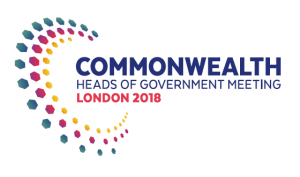As the Commonwealth Heads of Government Meeting (CHOGM) approaches I have been musing on the National Railway Museum’s relationship with Sierra Leone, which approaches its 15th year in 2019. The National Railway Museum in the UK and the National Railway Museum in Freetown, Sierra Leone, are the only railway museums in the world which are government owned and funded, but they share far more in common than just that.
The Sierra Leone National Railway Museum (SLNRM) was set up between 2004 and 2005 by former National Railway Museum Director Colonel Steve Davies when he was serving in the country. Andrew Scott, the director of the National Railway Museum at the time, attended the opening ceremony of the SLNRM. Staff from Freetown attended training at York and other heritage venues in the UK at the time and a spirit of friendly co-operation and support began which continues to this day.
In the last decade, a number of current and former National Railway Museum staff have visited Freetown and worked on projects to assist and advise the team. This has also resulted in the creation of the Friends of the Sierra Leone National Railway Museum. The Friends work to raise the profile of SLNRM, support activities at home and in the country and raise funds to help with important projects.
Recently, the museum in Freetown has seen the recruitment of a number of key staff, including administrators and education officers, as there are large numbers of school visits. The creation of a shop and archive are down to a local initiative supported by the Friends and in the last two to three years, we have worked with them on a British Library-funded Endangered Archives Project called Tracking the Past. Our then-archivist Tim Procter and Sierra Leone archivist Albert Moore worked together to digitise and preserve important railway records held at Fourah Bay College, Sierra Leone University and to make them accessible. You can read more about the project and view the archives here on the British Library’s website.
In a particularly tangible contribution, the project also saw a number former National Railway Museum computers, books and other equipment sent to Freetown to establish an accessible library and reading room in the museum. Display material, cases, frames, filing cabinets and educational resources have also made the journey to West Africa to enhance the museum.
On other visits, National Railway Museum staff have helped create a collection database and also supported staff who oversee the museum’s day to day running. They have worked on research and also finding artefacts and images in the UK to form a supporting collection. I produced a small booklet on the railways of Sierra Leone and the museum, Sierra Leone Railway Adventure, which is heading towards a revision and second printing. I have been a member and supporter of the Friends since inception, keeping the link between the two National Railway Museums active and alive, and I currently serve as Secretary.
The SLNRM is receiving a new roof—shades of what happened in York around 1990—and this will allow better collections care, investment in displays and an enhanced education offer. This is part-funded by a kind donation from a UK enthusiast through the Friends. In 2017, the Friends went truly international and a Freetown branch was established to allow volunteers to support and fundraise for the museum directly in Sierra Leone. A further link with the UK was the display between 2011 and 2017 of the Sierra Leone locomotive number 85 at Locomotion. The locomotive was on loan from the Welshpool & Llanfair Railway in Mid Wales, who had imported it in 1975.
As a colonial railway collection, the SLNRM’s holdings are of great importance. Rolling stock was built in the UK, and the railway was originally staffed by UK engineers. The last railway employees served their time as apprentices and managers with British Railways in the 1960s before heading home to work on the railway. The final Traffic Manager, Eddie Norman, started as a Traffic Clerk at Fence houses in County Durham, and knew the Friends’ own Frank Paterson—a small world indeed!
There are many links between the UK and Sierra Leone, some historic, some current and they all interweave. To read more of the fascinating story of the railways of the country, and some background to the museum and the amazing collection, visit the SLNRM website.

I visited the Freetown museum in Cline Town last year and met up with Helen Newby. Having lived in Sa Leone from 1967, as my late husband was from Freetown, it was good to see how well the museum is looked after.
Hopefully, I will visit Freetown museum. I want to see how beauty this vintage train.
What day when the National railway museum open on Tuesday 22nd may 2018.
Indeed it was a very good venture taken by Ret Cornel Steve Davies, to open the Railway museum, while he was in Sierra Leone serving with the lMMAT . It shows the love he had for his Country .I was his personality Security at the site while serving in the Sierra Leone police.